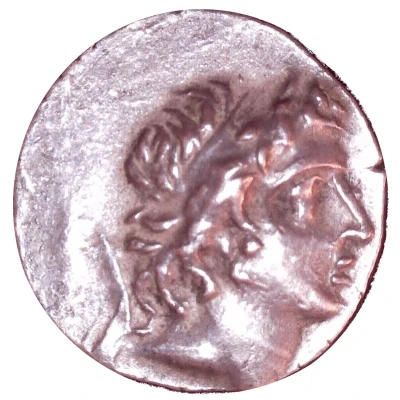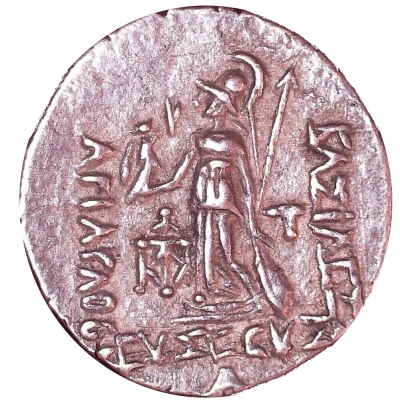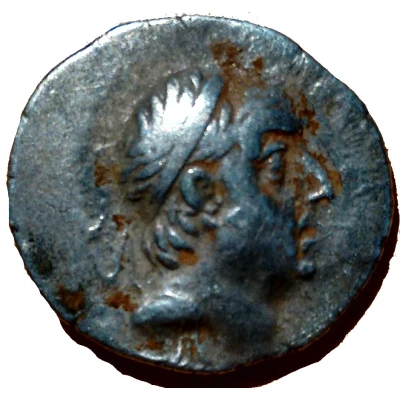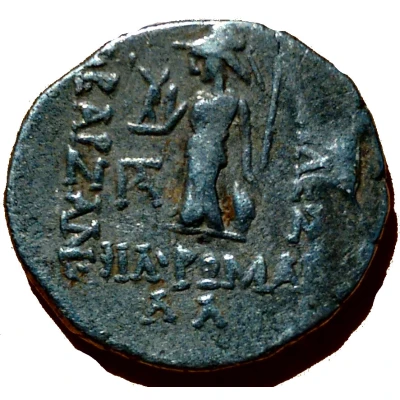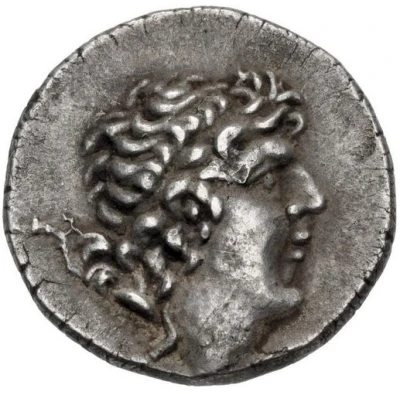
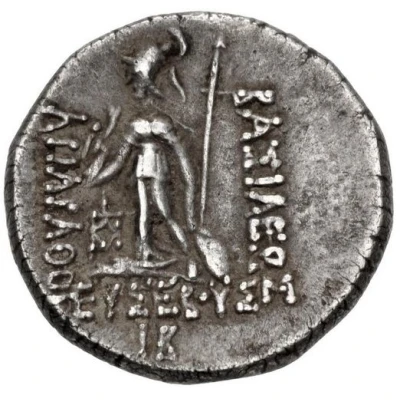

© Classical Numismatic Group, Inc.
Drachm - Ariarathes IX Eusebes Philopator 100 BC - 87 BC
| Silver (most likely AgCu) | 4.1 g | 18 mm |
| Issuer | Kings of Cappadokia |
|---|---|
| King | Ariarathes IX (100 BC - 85 BC) |
| Type | Standard circulation coin |
| Years | 100 BC - 87 BC |
| Value | 1 Drachm |
| Currency | Drachm |
| Composition | Silver (most likely AgCu) |
| Weight | 4.1 g |
| Diameter | 18 mm |
| Shape | Round (irregular) |
| Technique | Hammered |
| Orientation | Variable alignment ↺ |
| Demonetized | Yes |
| Updated | 2024-10-09 |
| Numista | N#380142 |
|---|---|
| Rarity index | 93% |
Reverse
Athena Nikephoros standing left, holds Nike, spear and shield, monogram inner left, monogram left, T right, date in exergue
Script: Greek
Lettering: BAΣIΛEΩΣ APIAPAΘOY EYΣEBOYΣ
Translation: King Ariarathes IX Eusebes
Comment
Ariarathes IX was one of the many sons of Mithradates VI, king of Pontos, who used his son as a puppet ruler for Cappadocia. Ariarthes was only eight years of age when his father assigned him to a task that will eventually claim his life. According to O. Mørkholm (in his articles in Essays Robinson and QT 1975), the obverses on the last two years of Ariarathes' mint A coinage carried a portrait of the Pontic king rather than his son. The purpose of the change is uncertain, but it may have been done in relation to a revolt of Cappadocian nationalists. These nationalists recalled the young Ariarathes VIII and promoted him as their king, in opposition to Mithradates VI and his puppet king. This revolt was quickly suppressed, and Mørkholm argued that in the aftermath Mithradates had his portrait placed upon the coinage as a more overt pronouncement of his rule over the Cappadocians via his son. Sources: http://www.forumancientcoins.com/catalog/roman-and-greek-coins.asp?zpg=24904 & https://www.cngcoins.com/Coin.aspx?CoinID=71784.Interesting fact
One interesting fact about this coin is that it features a unique blend of Greek and Persian influences in its design. The obverse (front) side of the coin depicts a portrait of Ariarathes IX Eusebes Philopator, while the reverse (back) side features an image of the goddess Athena, who was revered in both Greek and Persian cultures. This blending of cultural influences reflects the complex history of Cappadocia during this time period, as the region was situated at the crossroads of various empires and cultures.
